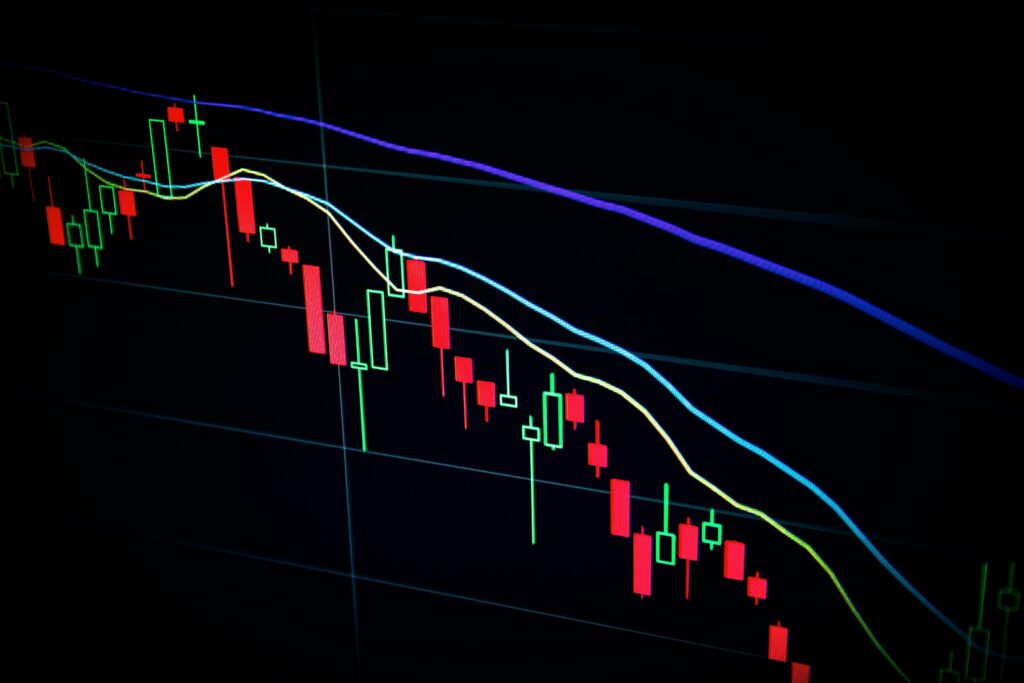Crypto Market April 2025 Update on Bitcoin, Ethereum, Altcoins

Table of Contents
The cryptocurrency market in April 2025 is in the midst of significant turbulence. Geopolitical unrest, new regulatory frameworks, and fluctuating investor sentiment are driving dramatic shifts in coin prices and trading volumes. With both bullish and bearish forces at play, it’s crucial for investors and crypto enthusiasts to stay informed.
Bitcoin and Ethereum Lead Market Movement
As of April 9, 2025, Bitcoin (BTC) is trading at approximately $77,105, representing a 3.36% decline in the last 24 hours. Ethereum (ETH) is also down, priced at $1,473, with a 6.05% drop. These two giants continue to set the tone for the rest of the market.
Altcoins are seeing similar downward trends:
- Binance Coin (BNB): $557 (-0.84%)
- Cardano (ADA): $0.56 (-7.37%)
- Solana (SOL): $104.41 (-5.16%)
- XRP: $1.81 (-7.65%)
- Dogecoin (DOGE): $0.147 (-4.61%)
- Polygon (MATIC): $0.17 (-3.94%)
- Litecoin (LTC): $71.07 (-2.64%)
This synchronized market dip suggests that investors are reacting to broader economic and geopolitical pressures rather than project-specific news.
Global Tensions Impacting the Crypto Market
Recent geopolitical developments are contributing heavily to market unease. China’s decision to impose an 84% tariff on U.S. goods comes in response to aggressive U.S. trade policies. Global stock markets are feeling the shockwave, with Japan’s Nikkei down nearly 4% and Europe’s Stoxx 600 Index also seeing declines.
Traditionally, crypto market was considered a hedge against fiat market turmoil, but in recent times, digital assets have begun to mirror equity market behavior. The increased integration of crypto into traditional finance—through ETFs, institutional portfolios, and cross-border investment—means it is now more sensitive to global events.
Regulatory Watch: EU and US Lead the Way
In Europe, the European Securities and Markets Authority (ESMA) recently issued a warning about the growing crypto market. Although crypto funds make up less than 1% of the EU’s overall financial instruments, regulators fear they could introduce systemic risk as the industry scales.
Meanwhile, in the United States, the SEC’s enforcement drive continues. Major exchanges like Binance and Coinbase have faced legal action for operating without clear registration, a signal that U.S. regulators are pushing for stricter oversight. The use of the Howey Test to classify crypto assets as securities is also under fire, as many believe the framework is outdated for decentralized systems.
These developments are a double-edged sword—on one hand, clearer regulations could lead to more institutional adoption, but on the other, they may stifle innovation and increase compliance costs for startups.
Government Crypto Initiatives in the Spotlight
A key highlight in U.S. crypto policy is the Presidential Working Group on Digital Asset Markets, introduced under President Trump’s executive order in January 2025. The proposal includes forming a national digital asset stockpile incorporating Bitcoin, Ethereum, Solana, Cardano, and Ripple.
The goal is to ensure the United States maintains a strategic advantage in digital finance and blockchain infrastructure. If executed, this move would mark one of the most aggressive national crypto adoption strategies by a major global economy.
Expert Predictions: What’s Next?
Despite current turbulence, analysts are confident in the market’s long-term prospects:
- Standard Chartered predicts Bitcoin will reach $200,000 by the end of 2025, citing increased institutional buying and regulatory improvements.
- Carol Alexander, professor at the University of Sussex, echoes this sentiment, attributing her bullish forecast to expected regulatory clarity.
- Ethereum is also expected to perform well, with Deltec Bank forecasting ETH could touch $10,000 by the end of the year, driven by staking adoption, the impact of EIP-1559, and broader DeFi expansion.
Final Thoughts
The crypto market in April 2025 is navigating a maze of challenges and opportunities. While prices are currently in decline, the underlying fundamentals of digital assets remain strong. The industry continues to innovate, attract institutional capital, and slowly gain regulatory clarity.
Investors should watch key indicators like U.S. regulatory decisions, global economic developments, and technological updates within blockchain protocols. As always, risk management and thorough research are essential when dealing with such a dynamic asset class.
With promising long-term forecasts and increasing government involvement, crypto may be in for a bright future—once the dust settles from today’s volatility.








